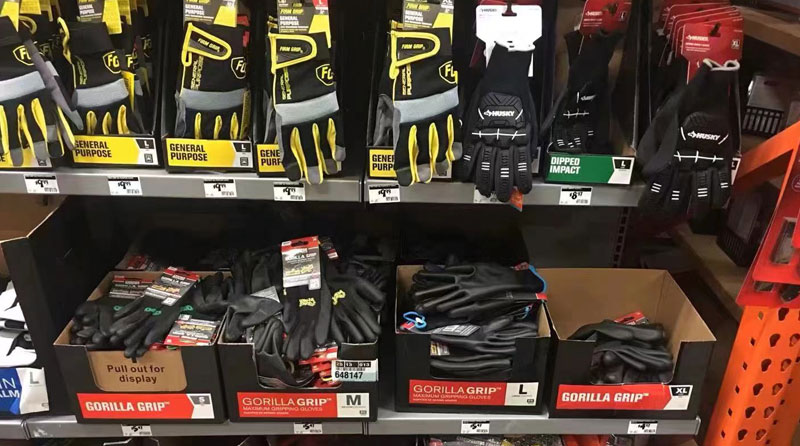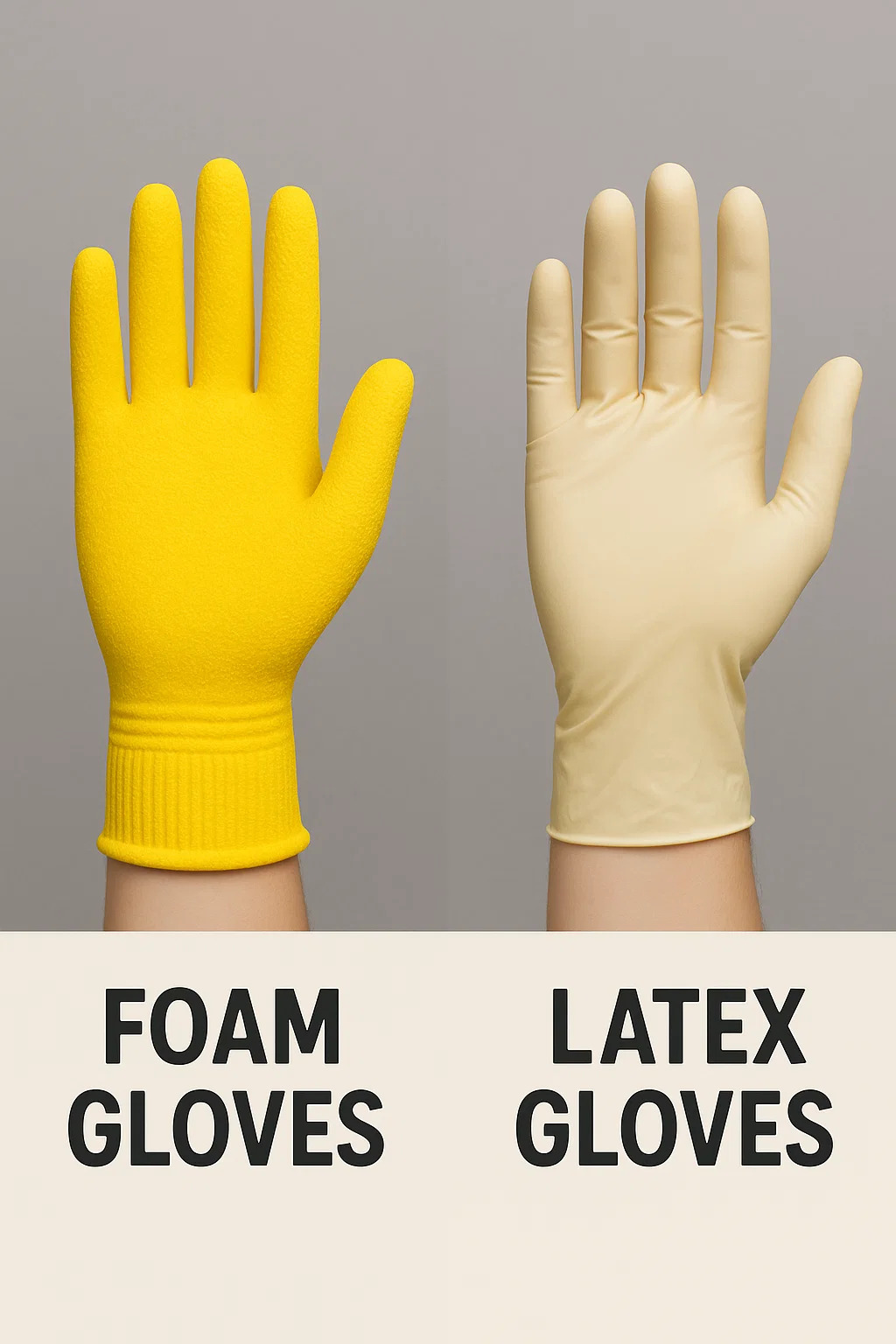Product Consultation
Your email address will not be published. Required fields are marked *

The terms "foam gloves" and "latex gloves" refer to distinct products with different materials, structures, and uses. Here's a clear breakdown:
Made from foamed polymers like latex, PVC, or polyurethane.
Created by whipping air into liquid rubber/plastic before molding, forming a spongy, porous structure with trapped air bubbles.
Thick and cushioned: Designed for padding and impact absorption.
Lightweight and flexible: Retains hand mobility despite bulk.
Breathable: Air pockets allow minimal airflow to the skin.
Household cleaning: Protects hands from hot water and chemicals while gripping wet objects (e.g., dishwashing gloves).
Protective padding: Absorbs shock in sports gear (e.g., boxing gloves, cycling gloves).
Insulation: Traps heat in winter gloves or work gloves.
Often textured or ribbed surfaces for grip.
Usually opaque and brightly colored (e.g., yellow, pink).
Made from solid natural rubber latex or synthetic latex (e.g., nitrile).
Formed by dipping molds into liquid latex, creating a thin, continuous film without air pockets.
Thin and form-fitting: Stretches tightly over the hand like a "second skin."
Highly elastic: Snaps back to shape when stretched.
Non-breathable: Seals out liquids but traps sweat.
Medical/surgical barriers: Prevents contamination from bodily fluids or pathogens.
Laboratory/industrial work: Protects against chemicals, biohazards, or oils.
Tattooing or beauty services: Ensures hygiene during procedures.
Smooth, glossy surface (sometimes powdered for easy wear).
Typically translucent or pale colors (e.g., beige, blue).

Your email address will not be published. Required fields are marked *
You can contact to me using this form.
